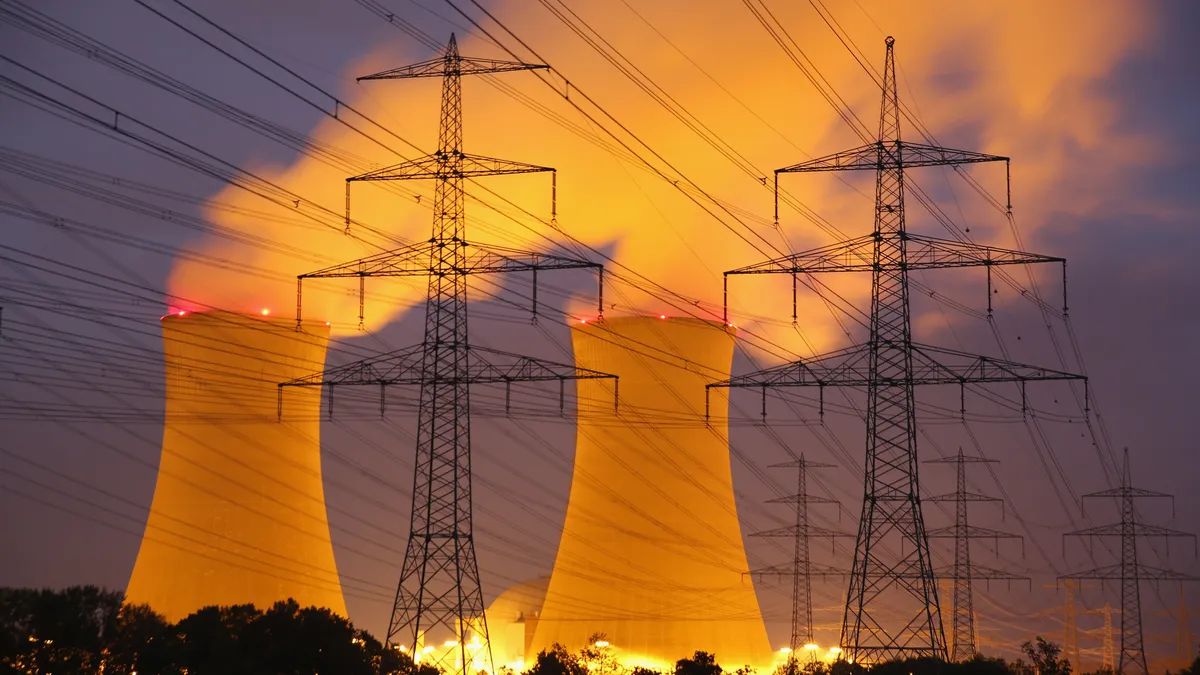Dive Brief:
-
An increasing push for renewable energy has opened doors for newer, more innovative renewable energy technologies, said Jigar Shah, director of the Loan Programs Office in the U.S. Department of Energy.
-
Shah spoke Tuesday with Resources for the Future president and CEO Richard Newell about how the Inflation Reduction Act has changed renewable energy financing. The Loan Programs Office cannot disclose projects it has financed unless that information is made public by other means. But Shah said recent deals have included nuclear plants, long-duration energy storage and hydrogen pyrolysis with carbon capture.
-
Banks and investor around the world may be throwing open their doors for solar projects, but financiers need to be “a little more bold” if the U.S. expects to decarbonize by 2050, he said.
Dive Insight:
The IRA appropriated nearly $12 billion for the Loan Programs Office to issue new loans and increases current loan program authority by about $100 billion.
Shah, whose office is charged with funding projects that struggle to secure conventional financing, said decarbonization will require a greater variety of renewable energy technologies than those that are mature enough to attract private financing.
As one of the founders of SunEdison, Shah helped pioneer solar project financing.
He said that among the banks that have announced plans to invest large sums in renewable energy, most will only accept wind, solar and lithium battery projects. Even relatively established options like hydropower aren’t always considered.
Unlike other DOE subdivisions that focus on research or demonstration projects, the Loan Programs Office aims to fill a critical gap in the private sector by helping technologies that are ready to scale, but lack the track record needed to attract private financing.
“The first deployment of a technology at scale...debt markets don’t want any part of that,” Shah said. “Unless that technology has 20% returns, it never gets deployed. And when you think about infrastructure, 20% returns is not something that infrastructure features. That’s more of a software thing.”
The Loan Programs Office doesn’t see itself as taking technical risk, Shah said. It doesn’t lend to projects with questionable technology. And unlike banks, DOE’s loan office has access to thousands of government scientists to help vet a project’s technical feasibility.
Where they do accept an uncommon level of risk, he said, is in project execution.
“When you work in a commercial bank, the way stuff works is you hire an independent engineer, and they will go say, ‘Yeah, there is nothing with this, this is easy.’ The technology is mature and if the operator goes bankrupt here are the other operators,” Shah said.
The loan office has been especially busy following enactment of the IRA, Shah said. Tax credits have drawn interest among private investors to not just wind and solar, but also more straightforward energy storage and hydrogen projects. That has freed the Loan Programs Office to pursue the next generation of energy projects.
Shah noted that for most of the projects, details are subject to laws protecting trade secrets, including the loan amount and recipients. He said the average loan from the office is $800 million and he highlighted a few recent funding announcements that have been shared publicly.
Those projects have included a nuclear plant, efforts to establish long-duration energy storage in Delta, Utah, by sequestering hydrogen in naturally occurring salt caverns and construction of a methane pyrolysis plant in Hallam, Nebraska. Methane pyrolysis is the process of using heat to split methane into its component parts—carbon black and hydrogen. The company aims to sell the carbon black to tire manufacturers and the hydrogen to ammonia fertilizer companies.
The Loan Programs Office has also been busy deploying new funds dedicated by the IRA to converting energy infrastructure such as coal plants to new, cleaner uses like energy storage. This funding does not carry the same innovation requirement as other funds administered by the office. Still, many old industrial sites require extensive environmental remediation, Shah said. The additional cost drives investors away from legacy energy producing communities in favor of cheaper sites.
The office has not yet awarded money under the new program, Shah said. It’s actively processing applications representing some $40 billion to $50 billion in potential projects.
Correction: We’ve updated this story to correct the average loan amount from DOE’s Loan Programs Office.













